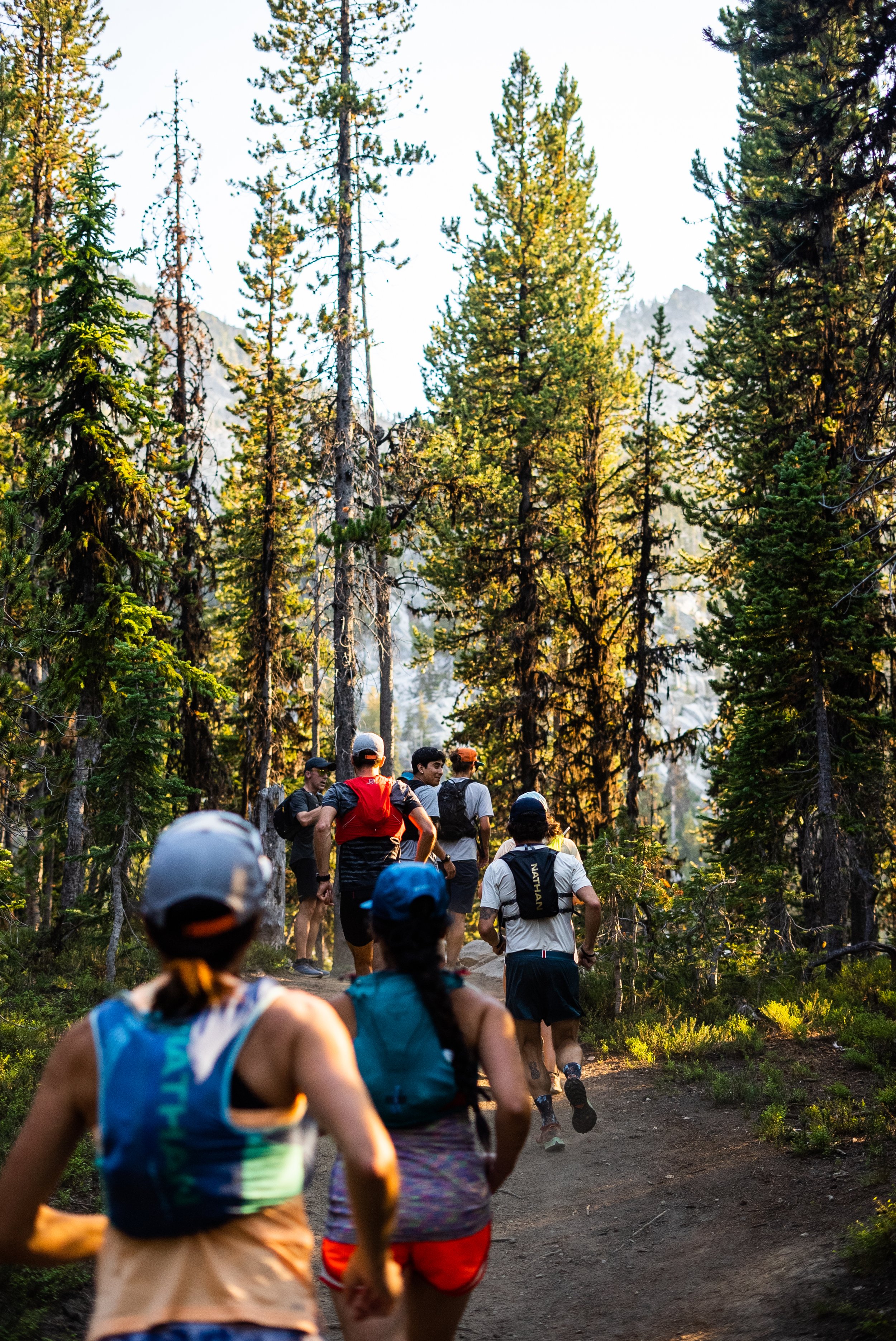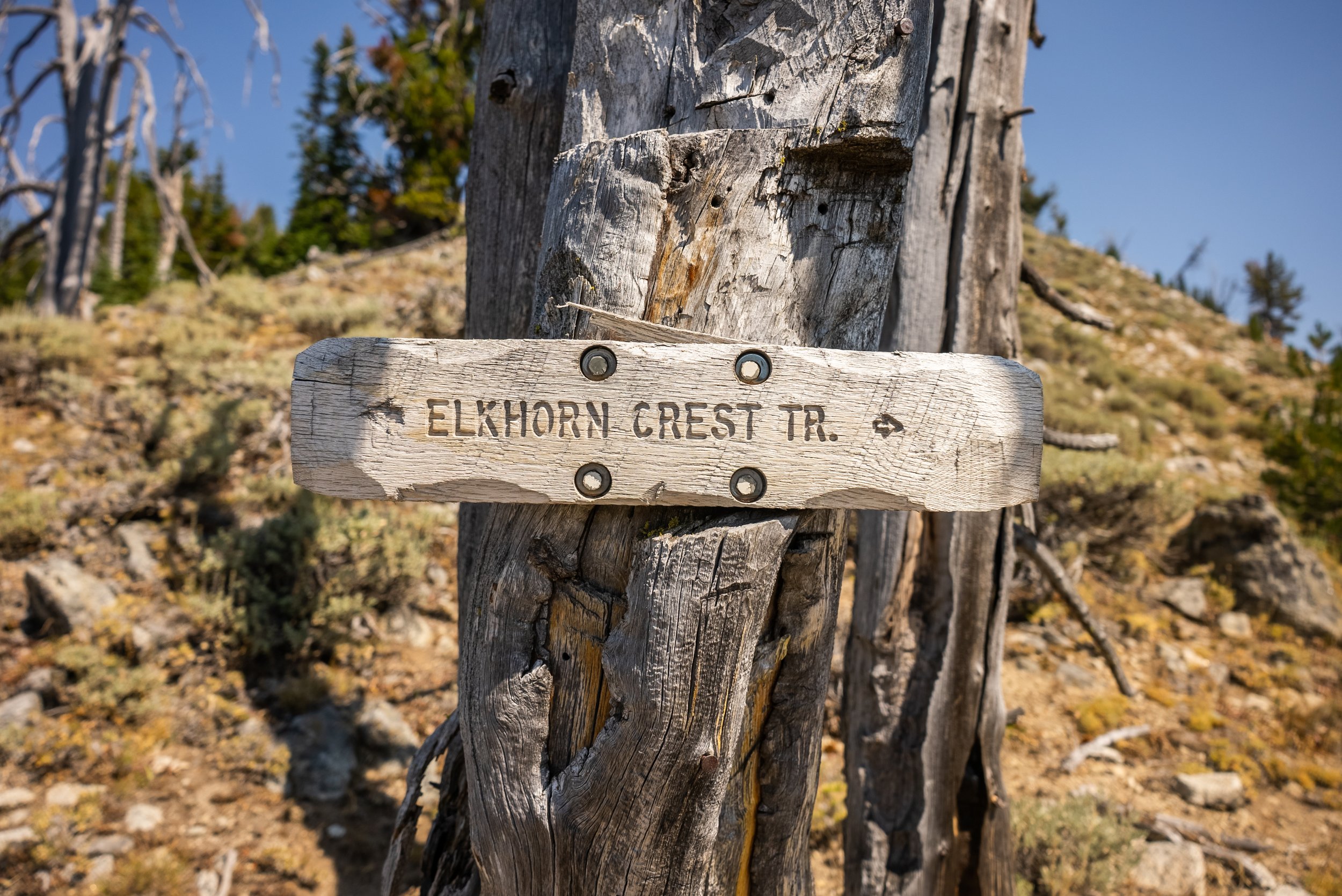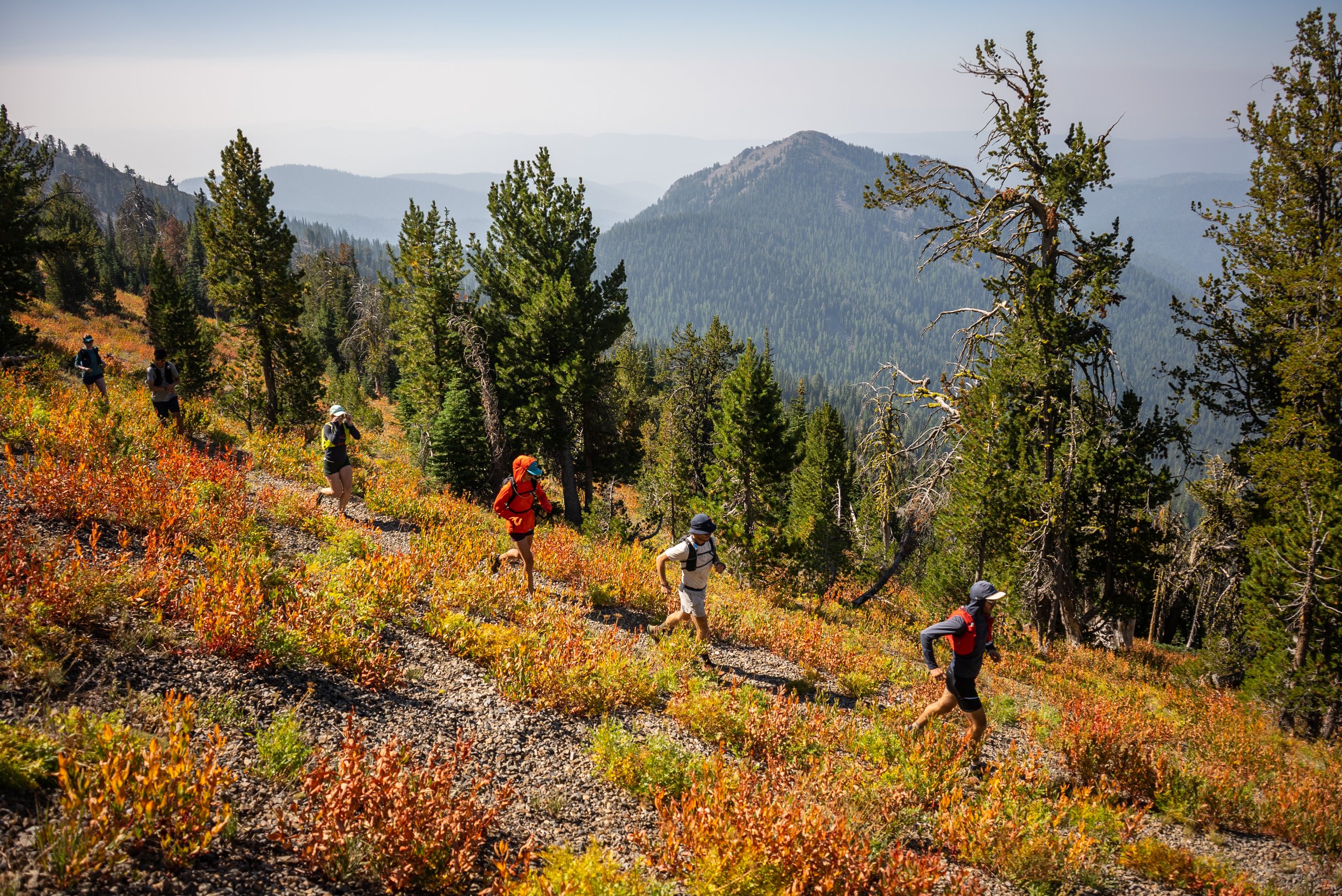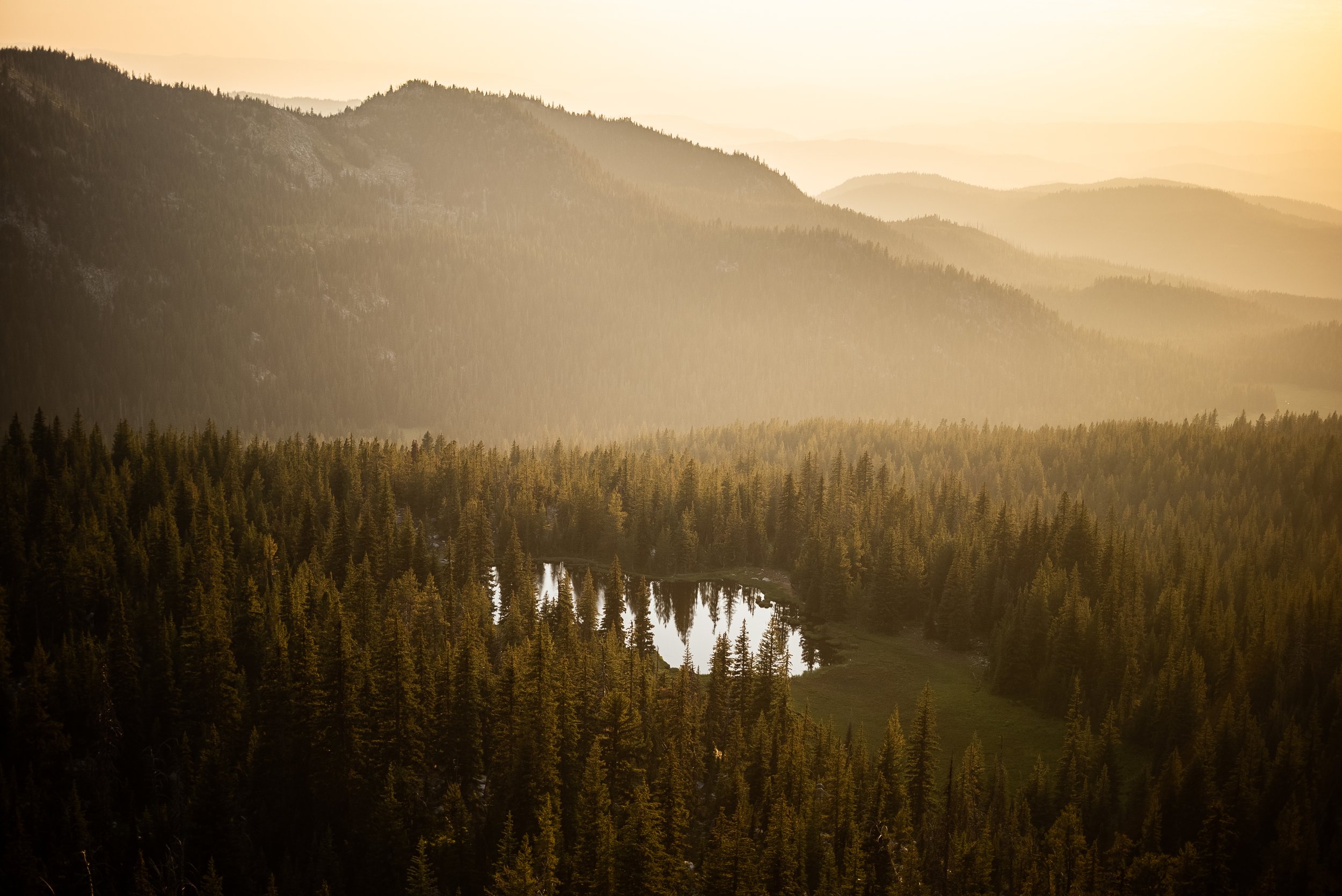Trail Camp
All photos by Steven Mortinson
It was turning into a sweltering day. While the rest of the group ran ahead, Steven, Dan, and I sheltered from the sun in the needle-strewn shade of a pine grove. We were five miles from the northern terminus of the Elkhorn Crest Trail. Just as our conversation lulled my InReach started beeping.
"Where are you? Might need first aid kit for Cate."
"Alright guys, I'm going to go see what this is about" I told said, tossing on my running pack and breaking into a jog up the trail.
This summer I decided to focus all my guiding energy on one camp. I wanted to combine lessons from the last few years into an experience that had a positive impact, was fun to put on, and didn't require a huge amount of marketing work. After months of assembling plans, permits, lodging, and, alas, marketing (two out of three ain't bad), I managed to round out a crew for four days in the backcountry.
I first learned the utility of a compass and a good set of maps on the Sierra High Route in 2015. It was the first time I'd used a compass for real, and it took me a while to figure it out on the go. Over the course of the trip I learned to read terrain, orient the map, and judge scale. For two hundred miles, half of which was off-trail, I only pulled out my phone a couple of times to find my location. It was a polar bear plunge into advanced backcountry navigation, and after my scabs had healed I couldn't wait for more.
First footfalls in the Elkhorns
With Trail Camp, I wanted to created a space for learning. Like my Sierra High Route experience, I wanted people to experience their edge and learn some tools that would be useful on their adventures. When we first arrived at camp I walked around to each of the cabins and removed the laminated sheet with the wifi password.
The Elkhorn Mountains are an ideal location for a trip like this. A little-known subrange of the Blue Mountains in the upper right corner of Oregon they have the character of a wolverine, fierce despite their small stature. The Elkhorns contain the Little Alps; a rugged winter and summer playground near Anthony Lakes Ski Resort. They are also home to the Elkhorn Crest National Recreation Trail which, despite the modest elevation of the range, maintains an elevation of nearly 8000' for its 22 mile duration.
At every Alpenflo trip to date I've been impressed with the quality of people who show up. Despite a range of abilities and experiences, everyone checked their ego, stashed their personal ambitions, and embraced the collaborative nature of the trip.
Trails of Trail Camp
On day two, we bumped down Forest Road NF-360, looking for a trailhead. The GPS showed us at the trail's origin, the road's shoulder showed nothing but a dry wash filled with pine needles. Hmmmm I thought to myself, looks like we're going to have to find another option...
We navigated the rough cut trail for 2,000' up to the Elkhorn crest trail. Losing the trail frequently, we practiced looked for hints. A worn patch, a thinning in the grass. We paused frequently to unfold maps, level compasses, and squint toward the hills to determine our position. Since we were exploring the area for the first time together, I didn't have to pretend as I searched out clues.
When looking for trails in a new place, where do you start? When I started exploring the wilderness, I would thumb through guidebooks looking for direction. After a year of that I started using National Geographic maps as my main source, following thick lines with bright colors.
Now when I look for routes, I use a mix of Caltopo, Gaia, and google searches to piece together information and plot a route. Part of the fun for me is the uncertain nature of these patchwork adventures. Frequently, bushwhacking is on the menu, but I've also found some wonderful hidden gems and rarely have to contend with crowds.
Dry country
Matt Walsh has been my PT and strength coach for over a year. He sat us down after a day in the mountains for a lighthearted lecture on performance, injury prevention and the oft overlooked importance of the achilles tendon.
I reached Cate and crew within a couple minutes. She had slipped off the trail and into something sharp, sustaining a gash on her shin. We irrigated the wound with the last of a water bladder and bandaged it up. The cut was deep, but she could bear weight, so we rose and continued down the trail.
Having four days to explore and camp with a group of runners was a special experience. I liked the opportunity that a longer camp provided to practice navigating the backcountry, learn a few skills, and relax by the creek. It took a lot of work to put together, but it ended up being a rewarding experience I'll remember fondly.
This year's trip has me thinking about what future camps might look like. Maybe there's a recipe I can use to get people together to learn, connect, and adventure in the mountains without the painful marketing work on evenings and weekends throughout the summer. I'll be thinking about it, and you'll be the first to know what I come up with.
I was proud of the way everyone rallied around each other, how they pushed themselves, and I was thrilled to see smiles on faces as they realized what they could do.
Post Elkhorn Crest Trail Portraits
Trail Camp wouldn't have happened without the support of these three. Susie, Steven, and Matt were generous with their time and made the weekend happen by guiding, teaching, cooking, driving, and documenting.


















